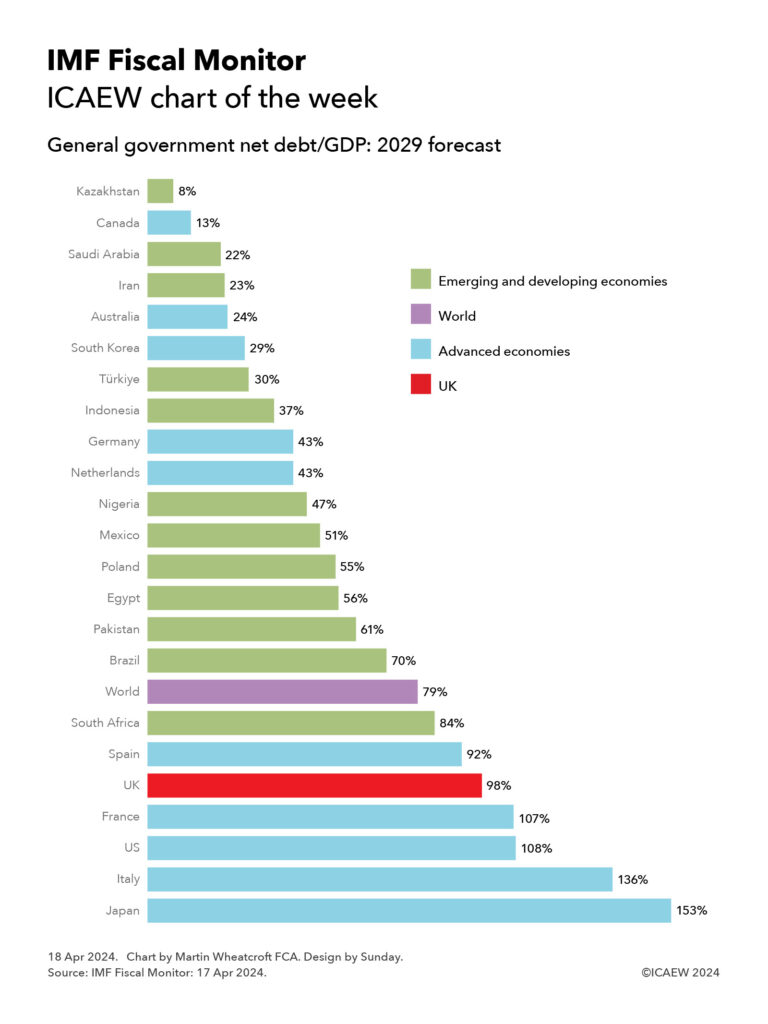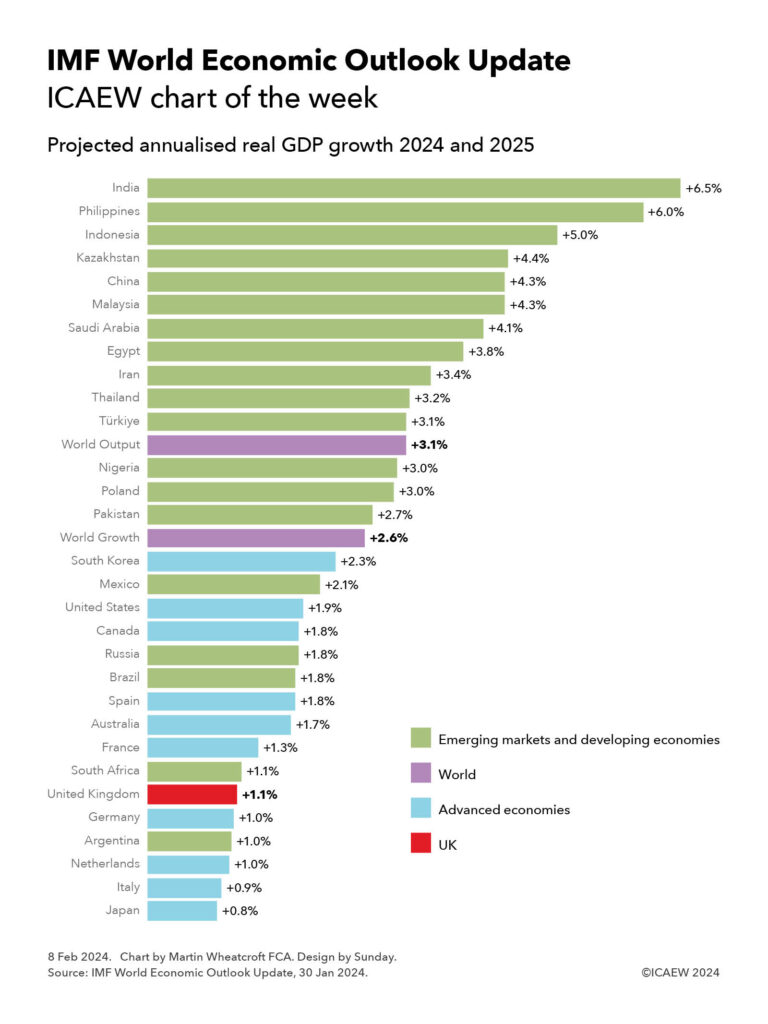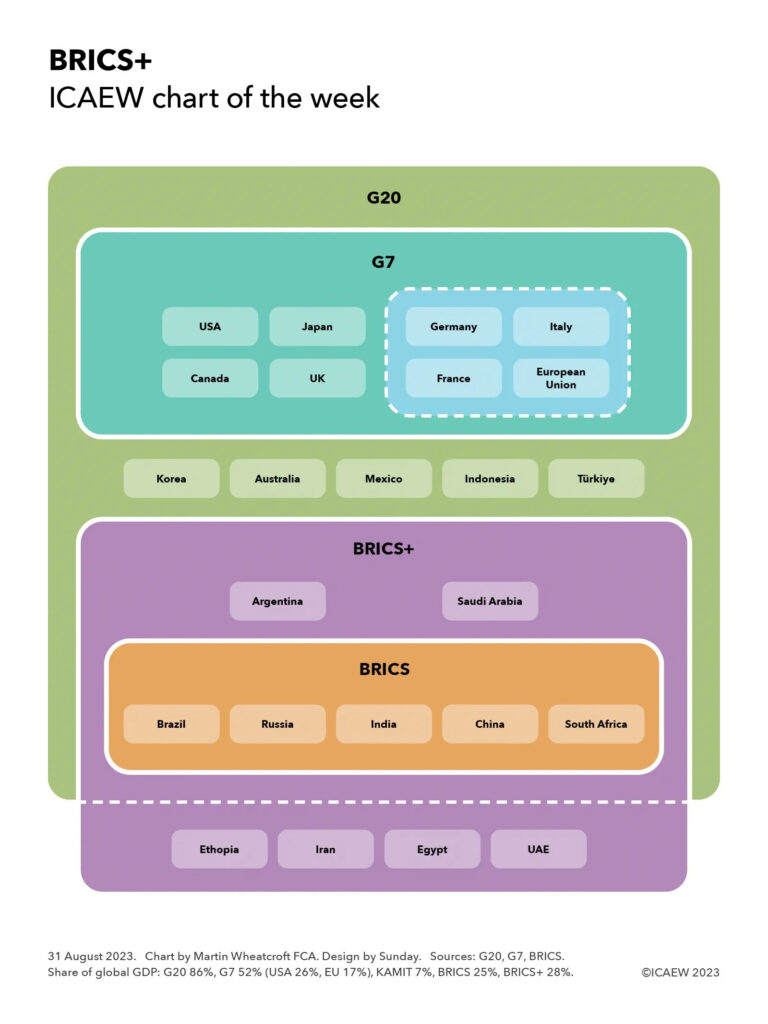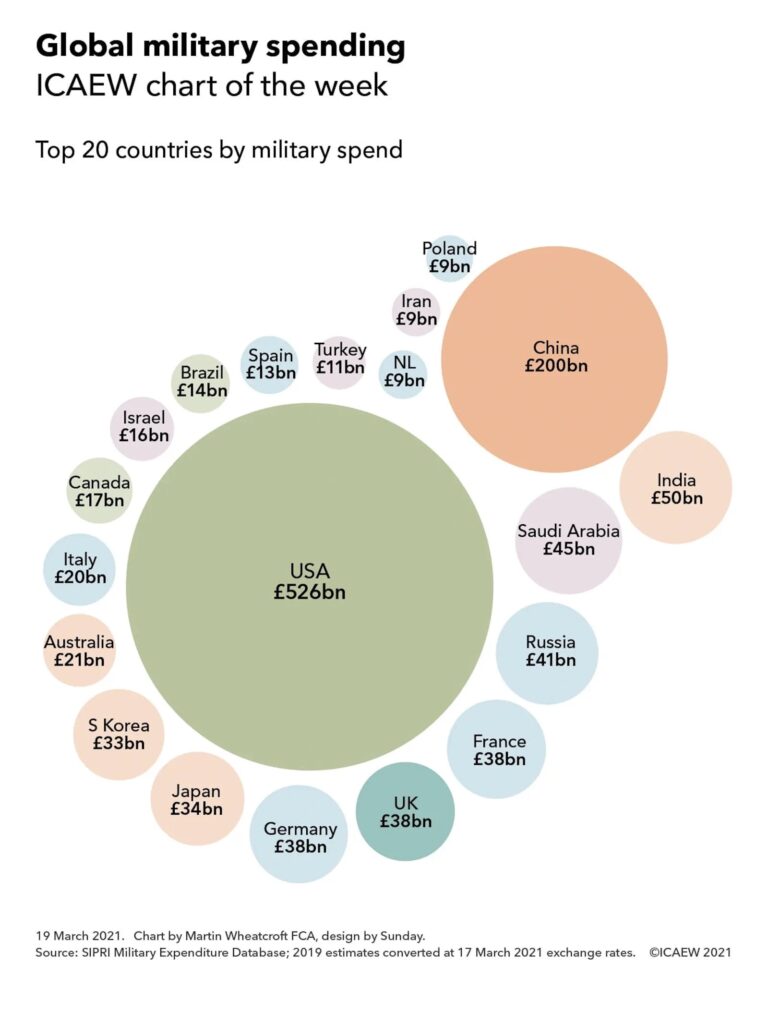Our chart this week finds that the UK is ranking highly in the IMF’s latest five-year forecasts for general government net debt.

The International Money Fund (IMF) released its latest IMF Fiscal Monitor on 17 April 2024, highlighting how public debts and deficits are higher than before the pandemic and public debts are expected to remain high. The IMF says: “Amid mounting debt, now is the time to bring back sustainable public finances”, commenting that as prospects for a global economic soft landing have improved, it is time for action to bring government finances back under control.
Our chart this week illustrates how the UK is one of the ‘leading’ nations in government borrowing, with general government net debt projected by the IMF to reach 98% of GDP by 2029, compared with 92.5% in 2023. (Note: general government net debt is different to the public sector net debt measure used in the UK public finances – the latter includes the Bank of England and other public corporations.)
The chart illustrates how the major countries with the largest debt burdens tend to be advanced economies, with Spain (92% of GDP), the UK (98%), France (107%), US (108%), Italy (136%) and Japan (153%) having debt levels close to, or exceeding, the sizes of their economies.
Some countries are in much better fiscal positions, with Germany expected to bring its general government net debt down to 43% of GDP by 2029, while the Netherlands (43%), South Korea (29%), Australia (24%) and Canada (13%) also have relatively low levels of public debt compared with other advanced economies.
Emerging market ‘middle-income’ and ‘low-income’ developing countries often have much lower levels of public debt than advanced countries, often simply because it is more difficult for them to borrow to the same extent as well as not having the same scale of welfare provision as richer countries to finance. Examples include Kazakhstan (projected to have a general government debt of 8% of GDP in 2029), Saudi Arabia (22%), Iran (23%), Türkiye (30%) and Indonesia (37%). However, that does not stop some emerging and developing countries borrowing more, such as Nigeria (47%), Mexico (51%), Poland (55%), Egypt (56%), Pakistan (61%), Brazil (70%) and South Africa (84%).
Not shown in the chart are China and India for which no net debt numbers are available. The IMF projects them to have general government gross debt in 2029 of 110% and 78% of GDP respectively, indicating how their public debts have grown substantially in recent years. However, without knowing their levels of cash holdings it is less clear where they stand in the rankings.
Also not shown is Norway, the only country with negative general government net debt reported by the IMF. Norway’s general government net cash is projected to reach 139% of GDP in 2029, up from 99% in 2023.
As with all metrics, there are some issues in comparing the circumstances of individual countries. Many countries will also have investments, other public assets, or natural resource rights that are not netted off against debt, while many will also have other liabilities or financial commitments that aren’t counted within debt. For example, the UK has significant liabilities for unfunded public sector pensions as well as even larger financial commitments to the state pension, either of which, if included, would move the UK above the US in the rankings.
The IMF believes that as the world recovers from the pandemic and inflation is brought under control, it is important for countries to start tackling the deficits in the public finances and start bringing down the level of public debt.
This may be difficult for countries such as the UK where significant pressures on the public finances mean public debt is expected to increase over the medium term rather than fall.


